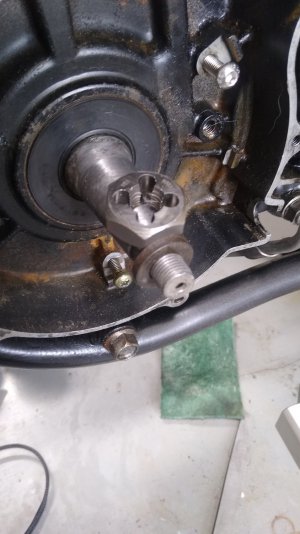- Joined
- Nov 13, 2013
- Messages
- 137
Hello Forum
I've acquired a motorcycle crankshaft with fouled 12mm x 1.25 TPI threads. Cleaned up the "mushroomed" section, purchased the correct die.
Currently having difficulty in getting the die to capture the first threads. I know there is someone out here in forum world with a trick up their sleeve
and would love to be enlightened.
Thanks!
I've acquired a motorcycle crankshaft with fouled 12mm x 1.25 TPI threads. Cleaned up the "mushroomed" section, purchased the correct die.
Currently having difficulty in getting the die to capture the first threads. I know there is someone out here in forum world with a trick up their sleeve
and would love to be enlightened.
Thanks!

